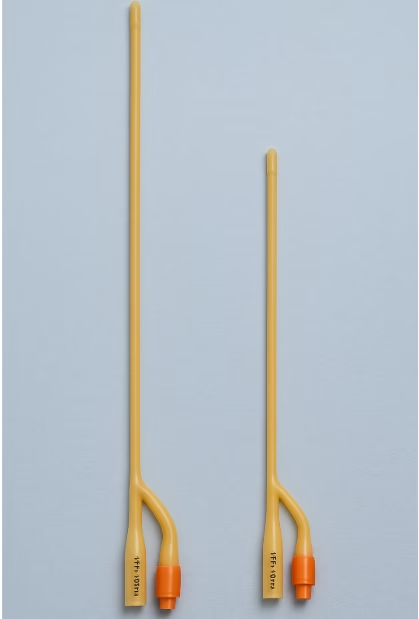Ask any experienced nurse and they’ll tell you: inserting a urethral catheter feels routine right up to the moment something goes wrong. Over the past decade, UK incident-reporting systems have logged thousands of catheter-related injuries, and the same handful of technical slips keep turning up. The good news? Each one is entirely preventable with a little vigilance and a few tweaks to practice.
Below, you’ll find the five errors that crop up most often, why they happen, and the practical fixes that will keep your patients safe and your shift uneventful.
1. Using the wrong-length catheter (or Inflating Too Soon)
What goes wrong
Female-length catheters (≈26 cm) sometimes end up in male patients, or a standard catheter is inflated before it reaches the bladder. Either way, the balloon expands in the urethra causing pain, bleeding, even renal injury. Remember: right size-right patient.

Why it happens
Look-alike packaging, mixed stock in busy cupboards, and the temptation to hurry a “simple” task.
Simple fix
- Keep female catheters in a segregated, boldly labelled space.
- Advance to the Y-junction and wait for a reliable urine flow before you touch the syringe.
2. Stopping Short When You Meet Resistance
Even the correct catheter can snag on an enlarged prostate, a stricture, or pelvic-floor tension. Inflating the balloon while you’re still in the urethra tears mucosa and, in spinal-injury patients, can trigger autonomic dysreflexia.
Simple fix
If you meet resistance, pain, or no urine appears, stop. Call a colleague, grab ultrasound, or reassess your angle rather than forcing the issue.
Remember: Recognise your limit!
3. Forgetting to Pull the Foreskin Forward
Post-procedure paraphimosis is usually another fault: the foreskin stays retracted, forms a constricting ring, and can strangle the glans in hours.
Simple fix
Make “foreskin returned” the last item in your sterile field. Say it out loud; chart it. If the patient is circumcised, note that instead.
4. Overlooking Urethral Implants
Artificial urinary sphincters, permanent stents, and other hardware lurk unseen until a Foley is threaded straight through them, damaging both device and urethra.
Simple fix
Ask every patient (or their records): “Any urinary implants or previous urethral surgery?” If the answer is yes or unclear, pause and seek urology advise.
5. Losing Track of the Catheter Afterward
Broken balloons, retained fragments, or “forgotten” long-term catheters can seed chronic infection or fatal sepsis.
Simple fix
Document catheter size, balloon volume, and the next scheduled change. If removal feels incomplete or symptoms persist, get imaging sooner rather than later.
Your Pocket Safety Checklist
- Correct length for the patient—check the packaging twice.
- Advance to the bifurcation, watch urine flow, then inflate.
- Replace the foreskin (or record circumcision).
- Ask about implants every time.
- Stop and escalate when you hit pain, resistance, or dry tubing.
- Log size, balloon volume, and review date before you sign off.
Why This Matters
Catheters will always carry risk, but most severe injuries stem from a few controllable moments. By tightening your technique around these five points, you’ll cut the biggest dangers down to size and turn an everyday task into a quiet triumph of patient safety.
Some training? if you would love to get a refresher for free and have NHS e-learning hub account, please search using the keyword ‘learning hub promoting best practice in catheter care’. You will be awarded a certificate on completion of the course.
Disclaimer
This article offers general information for UK healthcare professionals. It does not replace local policies, manufacturer instructions, or real-time specialist advice. Always follow your organisation’s guidelines and seek senior or urological input whenever uncertainty arises.



